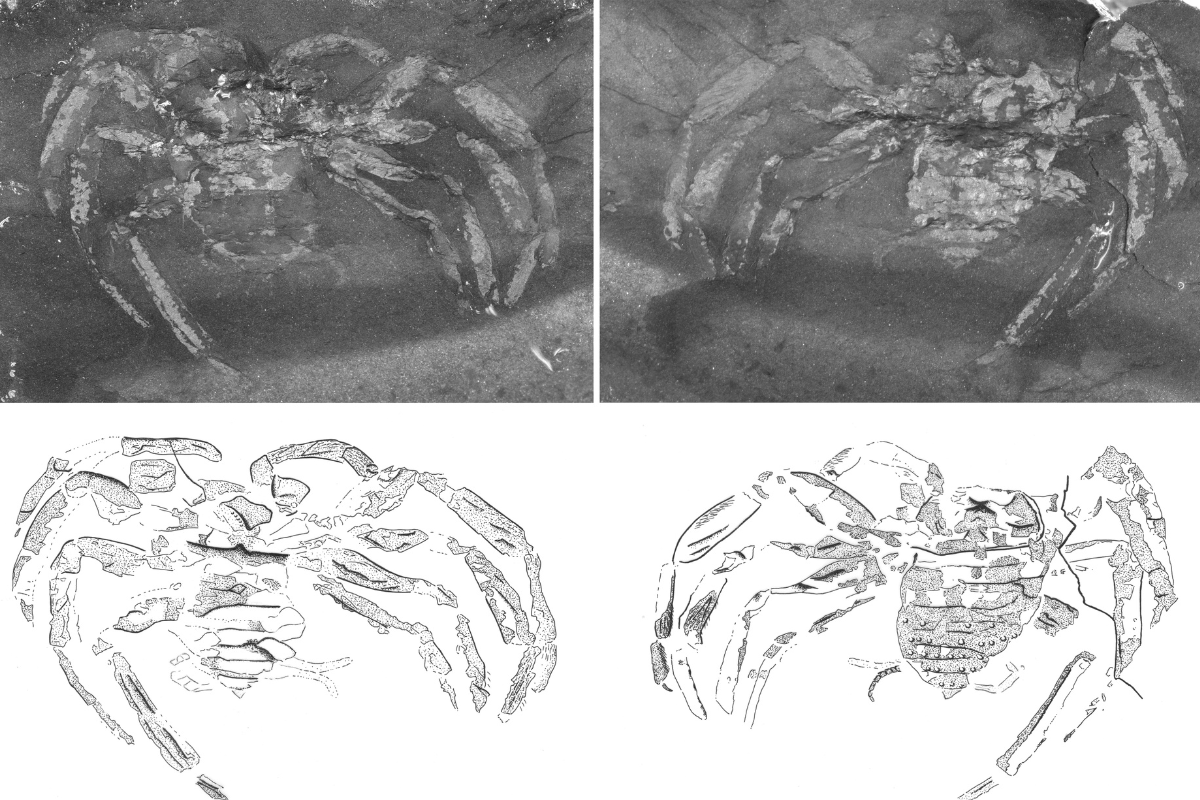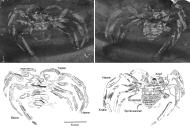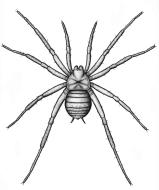In a recently published article in the international journal Paläontologische Zeitschrift, Dr. Jason Dunlop from the Museum für Naturkunde Berlin found the oldest spider ever discovered in Germany, which dates to between 310 and 315 million years old. Arthrolycosa wolterbeeki comes from the Piesberg quarry near Osnabrück in Lower Saxony and now enriches the museum's 30 million-strong research collection.
Spiders are one of nature's great success stories. To date, more than 51,000 species have been described worldwide. About a thousand species live in Germany. Spiders are also preserved as fossils. More than 1,400 extinct species are known worldwide. The oldest date back more than 300 million years to the Carboniferous age.
In a recent article published in the international journal Paläontologische Zeitschrift, Dr. Jason Dunlop from the Museum für Naturkunde Berlin described the oldest spider ever discovered in Germany. Arthrolycosa wolterbeeki comes from the Piesberg quarry near Osnabrück in Lower Saxony. This spider is between 310 and 315 million years old and was named after its discoverer, Tim Wolterbeek, who kindly donated the fossil to the Berlin Museum. It now enriches the museum's 30 million-strong research collection.
The spider had a body length of about one centimeter and a leg span of about four centimeters. The fossil is well enough preserved to see details of the silk-producing spinnerets and even hair and claws on the legs. Arthrolycosa wolterbeeki belongs to a primitive group of spiders, the so-called mesotheles, which, in contrast to most spiders today, still have a segmented abdomen. Its living relatives are found only in East Asia.
Piesberg is an important fossil site for Germany and was declared a National Geotope in 2019. The quarry has yielded numerous fossils of plants, insects and other animals, including arachnids such as scorpions. This new fossil shows that late Carboniferous spiders also lived in the Piesberg coal forests. Spiders of this age are still extremely rare. Only twelve Carboniferous species worldwide can be positively identified as spiders, with previous records coming from France, the Czech Republic, Poland and the United States.
Arthrolycosa wolterbeeki is the oldest spider from Germany, the next oldest comes from the Mesozoic (Jurassic). Although spiders are widespread and common today, they seem to have been rare more than 300 million years ago. Modern mesothele spiders spend most of their lives in a burrow surrounded by silk threads that act as "trip wires." If fossils like Arthrolycosa wolterbeeki had shared a similar lifestyle, they might only have gone out occasionally and rarely fallen into the water, which is a requirement for fossilization. The evolutionary radiation of spiders probably only began later together with the insects, which had to be caught in webs from the air.
Published in: Dunlop, J. A. 2023. The first Palaeozoic spider (Arachnida: Araneae) from Germany. Paläontologische Zeitschrift. https://doi.org/10.1007/s12542-023-00657-7
1st Picture: Photo and drawing of the original fossil.
2nd Picture: Reconstruction of the probably appearance of the spider in life.


